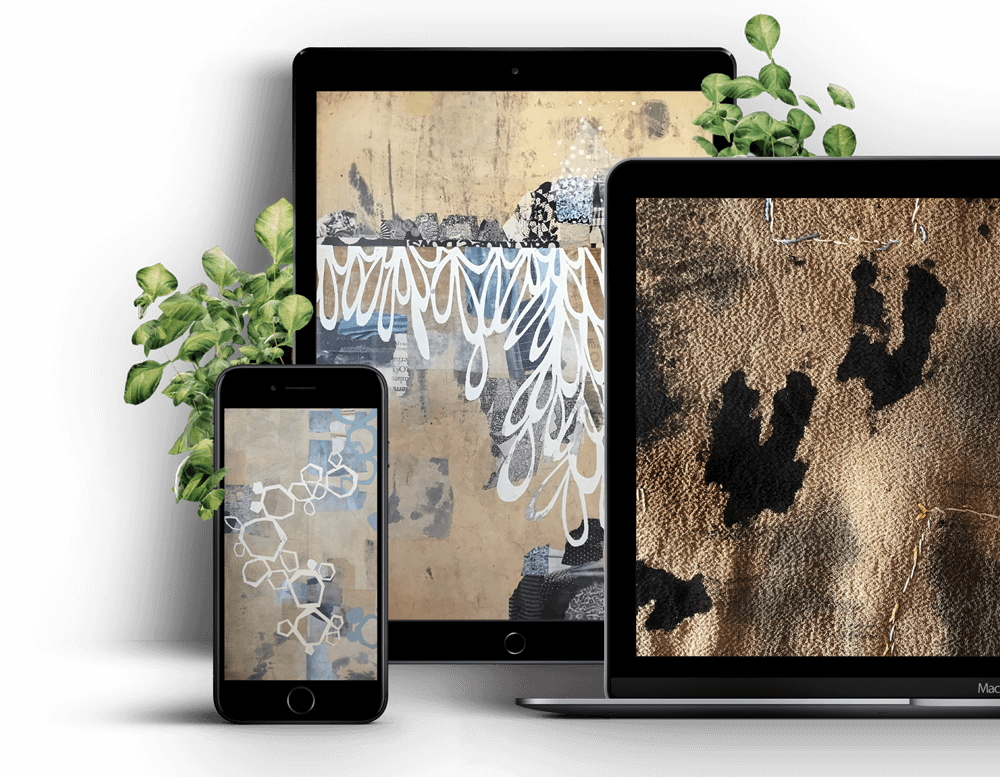Sarah Brayer: Washi and Phosphorescence
Fibre Arts Take Two has been taking a journey through Japan, meeting with internationally acclaimed artist Sarah Breyer, whose work has captivated audiences worldwide.
Renowned for her large-scale poured washi paper works and aquatint prints, Kyoto-based American artist Sarah Breyer has pursued her passion for traditional washi paper since the 1980s.
Receiving many prestigious awards, including the Ministry of Cultures Commissioner’s award for international dissemination of Japanese culture through her unique creations in etches and washi. Sara’s artistic odyssey began with her fascination for Japanese art, leading her to explore printmaking in London and eventually embark on a life-changing backpacking adventure to Japan.
As a global citizen, Sarah divides her time between Kyoto, Imadate and New York City, continuously exploring new realms in her craft. In this intimate conversation, we uncovered Sarah’s inspirations, creative process, and the profound impact of Japanese culture on her art.
Discovering Japan
Sarah has been in Japan for many years. Still, her journey started without any certainty.
“It originally started as an adventure after I finished college,” says Sarah, “and I had the chance to come to Japan with a friend. The plan was to hitchhike around the country. I wanted to be an artist; I knew that. I was trying to figure out the transition between being a student artist and a working artist. I wanted to see more of the world, and I was quite taken by Japanese prints and ceramics. So what started as an adventure became more of a place to live, although it took several years for me to realise that.”
Sarah fell in love with Japan, “It was an amazing place,” she says, “and every day was different. Lots of challenges because I did not have that language when I first got here. But what was amazing was after getting to Kyoto, maybe two months into the trip and finding a little place to live, I met some other artists and realised I could continue printmaking, which I had focused on my last year in college.”
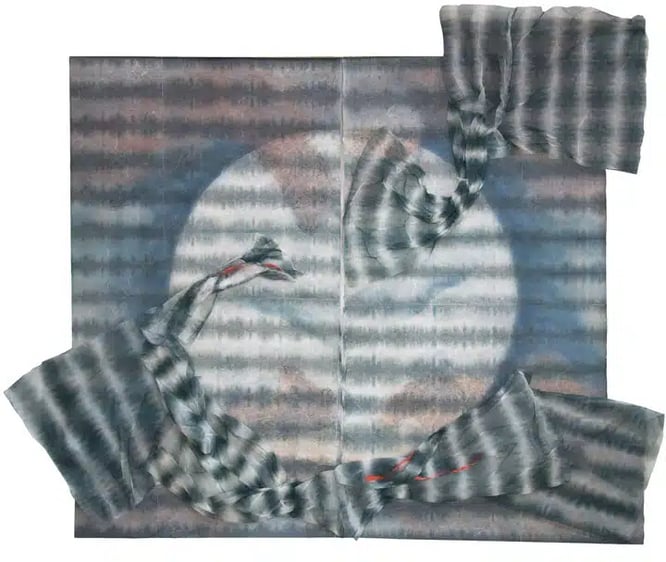
Living in Japan
Before long, Sarah discovered she could live in Japan and continue creating art, “It was great because what I discovered was that I could eventually teach English part-time, three nights a week, and that was enough to live on,” she says, “That was amazing to me, because I had my days free so I started to go out and explore Kyoto, and I did a lot of on-site, sketching. Then, you know, I did this etching in my kitchen and then found a lovely woman who had an etching press, and I started to go and print my prints at her place. Then it started to build, and one thing led to another and one particular thing that probably changed the course of things was that some friends invited me to be in a show. We got some art prints together, and to my surprise, some of my work sold. Wow! So that changed my focus because I assumed I would return to the States and get a master’s degree and teach. After all, the artists I knew had that sort of lifestyle.”
Washi
A big part of Sarah’s love of Japan came from her love of washi, which is traditional Japanese paper.
“I’d always loved Japanese paper. I had tried painting watercolour on it with pretty disastrous results. It’s tough to paint on unless you have some technique behind you, but because I was doing etching, I started to do chine-collé on washi, and I was working on print. I could buy washi quite easily here, but one time I was back in New York, and I was making complex prints with lots of different parts and collaging the washi onto a backing paper and then printing on top of that. I started to think, ‘I wonder if I could make my own paper’. And that led me to a paper studio in New York named Dude. When I went into the studio and watched the process, I realised that kind of art-making with paper would be something I could do in Japan.”
When she came back to Japan with her new knowledge of paper-making, Sarah had one thing on her mind, “I was eager to find a place to work, and I had no context, so I went to my local paper store, and I asked Mr Taki, who was always really nice to me, if he knew a place I could work with washi paper and he sort of nonchalantly says, ‘Well, you know, my brother has a place’. Of course, I jumped on the opportunity. We went up pretty soon after that discussion, and I walked in the door and was just really impressed and excited.”
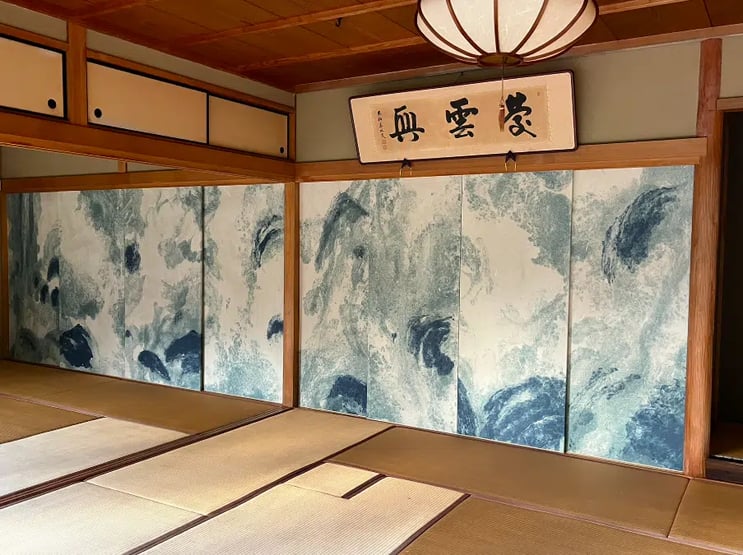
Working big
One of the things that Sarah is famous for is her large-scale work. “I had a commission for a restaurant in Oakland, California, and it was a 42-foot-long wall,” says Sarah of one of her largest pieces, “And huge, it was really large. That was the largest piece I made and was so large that I couldn’t even look at it in my studio in one go. I made it in sections. That particular piece was based on a beautiful palace in Kyoto called Katsura Rikyū, and in that palace are some famous checkerboard Indigo doors with blue and white panels. That’s a beautiful example of using the indigo blue and then the pattern on the door, and they change over time because the colour starts to fade. It’s just an interesting, very quintessential part of the Japanese aesthetic, that particular palace.”
Phosphorescence
Another of Sarah’s signatures is her use of stunning phosphorescence, “There is phosphorescence in nature in many places,” she says, “There are phosphorescent mushrooms and plants, and they’re finding more and more fish deep in the water that are phosphorescent.”
Sarah drew from nature with her own phosphorescent work, “The Phosphorescence and the Luminosity series came to me as I was working on a Moon series,” says Sarah, “and I was thinking about lighting the pieces I was making. I wanted to display them in a dark, black room with shifting light, like with spotlights. I was imagining that it would be very interesting to have the light shift over the moon as if it was coming in and out of the clouds.
As I was getting ready to figure out how to do that, I was introduced to the phosphorescent pigment. I thought, ‘Oh, wow, that’s really interesting. What if I had the glow right in the paper? Then I wouldn’t have to rely on an outside source.’ So that was the germ of the idea, and then I had to see if it would work.”
It took some time, but Sarah did get it to work, “When I first started working with washi, I tried using powdered pigments in the wash sheet, and I watched some really expensive mineral pigments go down the drain. It just didn’t hold. So the phosphorescence is a powdered pigment. It’s made in the lab, so it is synthetic. It’s based on a similar idea to phosphorescence in nature. It’s a very stable product. And it’s also non-toxic.”
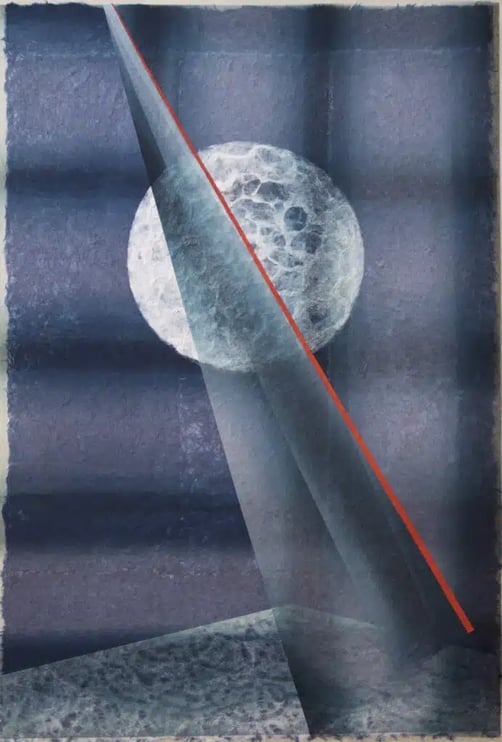
About the artist
Sarah Brayer is an American visual artist based in Kyoto, Japan. She is internationally known for her large-scale, poured washi paper works and aquatint prints. In 2013, Japan’s Ministry of Culture awarded Sarah its Commissioner’s Award, Bunkacho Chokan Hyosho, for international dissemination of Japanese culture through her unique creations in Echizen washi.
Sarah’s art is in the collections of the British Museum, the National Museum of Asian Art, the New York Public Library, and the American Embassy Tokyo.
Currently residing in northern Kyoto, Sarah divides her working time between Kyoto, Imadate, and New York City.
Notifications
Join Our Newsletter
OUR YOUTUBE CHANNEL
View our interviews and more on our Youtube channel!
OUR FACEBOOK GROUP
Join our Community and stay updated with our upcoming announcements!

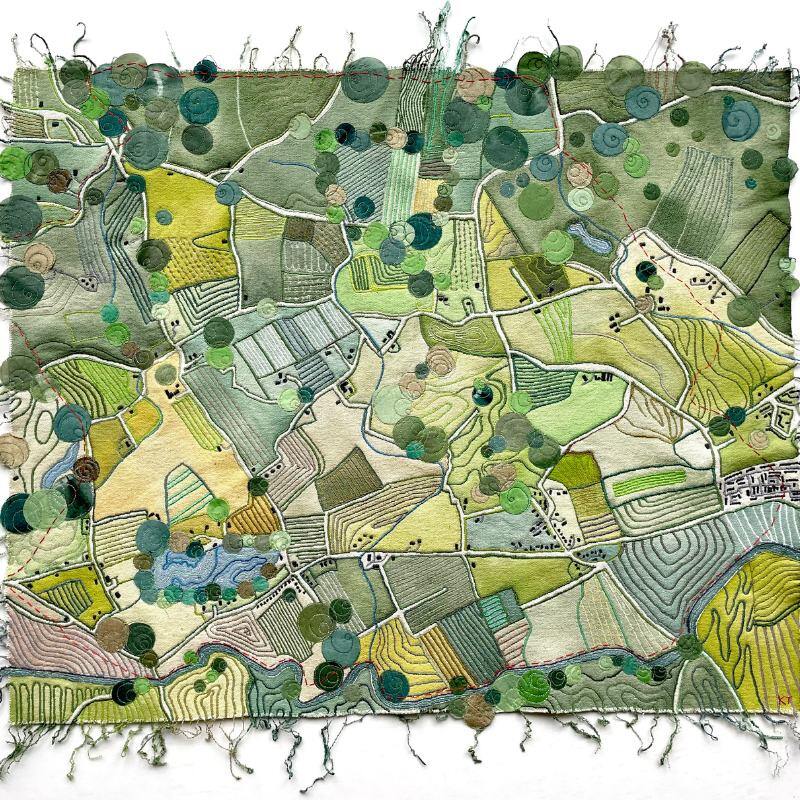
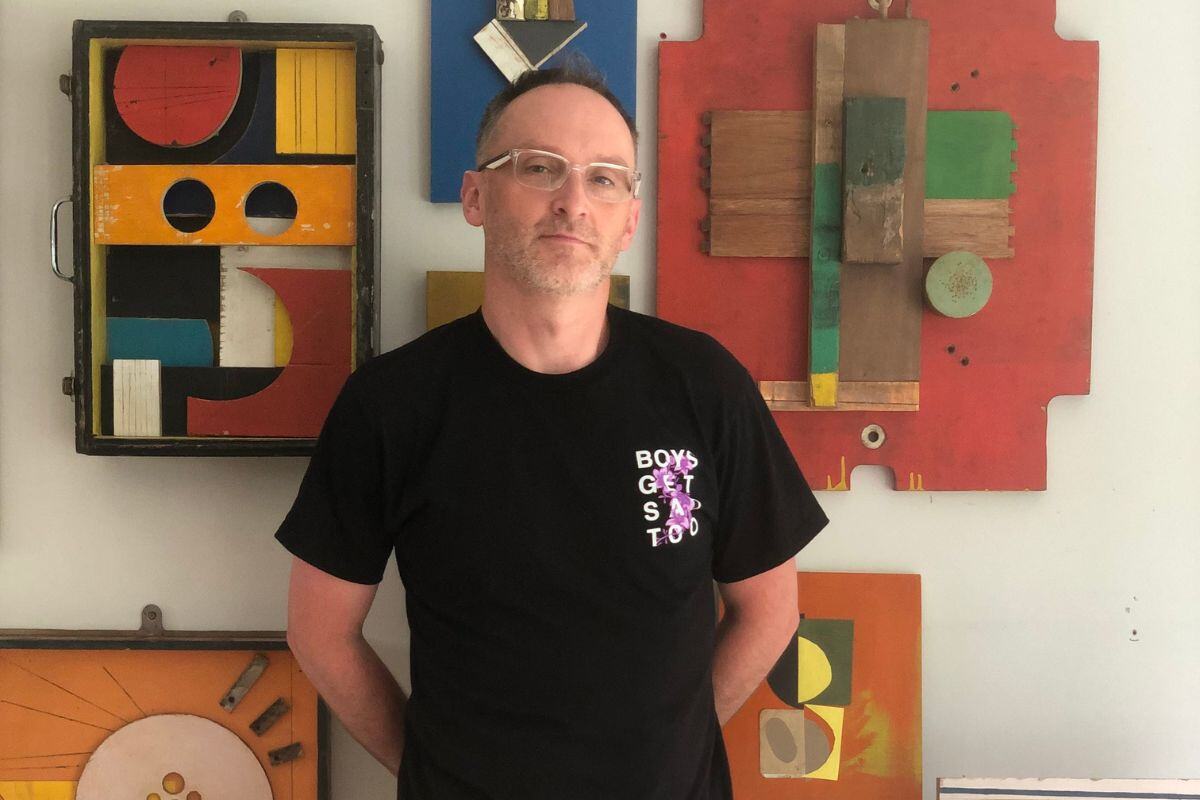
.jpg)
